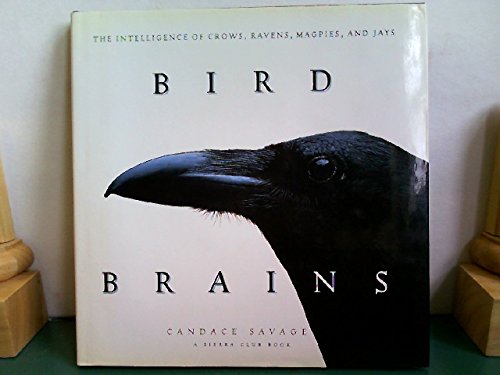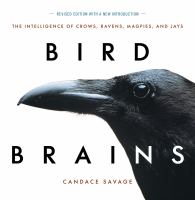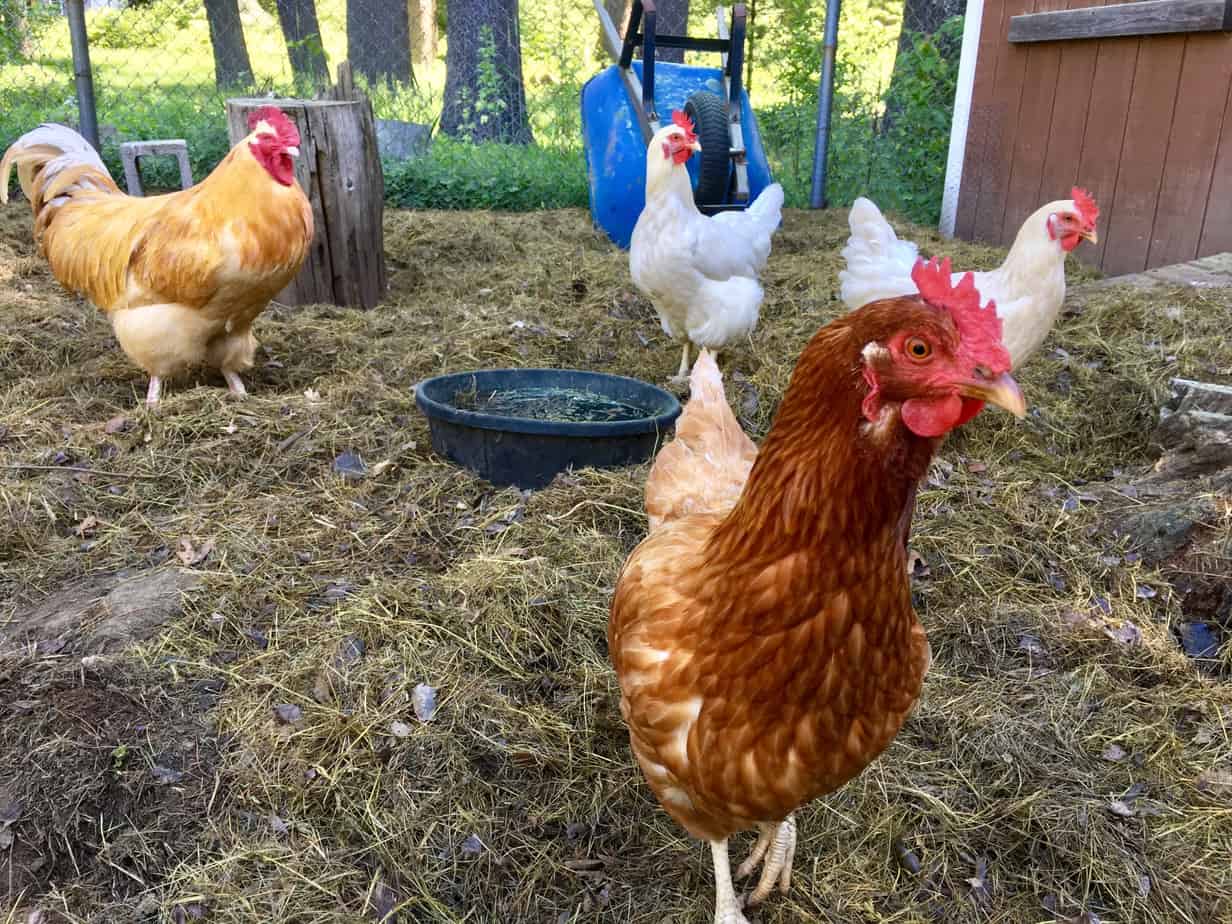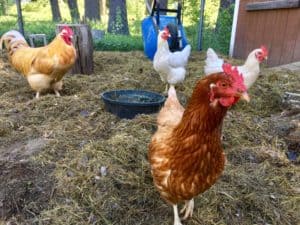Tag Archives:from the library

18
JulWe’ve Come a Long Way, Baby – In Women’s Sports

I am, perhaps, one of the most uncoordinated women on earth. Oh, yes, I had the distinction of managing my seventh-grade softball team, but in retrospect, I suspect my team gave me the job as a manager because voting me the position of manager kept me from either guarding a base or handling a bat.
I have somehow accomplished a few sports during my lifetime. I learned to ice skate at the tender age of five on a meandering city park pond in the heart of Worcester. I managed to straighten my buckling ankles and have lovely childhood memories of taking care of my gorgeous pair of lace-up, white skates. I continued to skate for fun after we moved to the West Coast and into my pre-teens on the public indoor ice close to my neighborhood in Berkeley, CA. The San Francisco Bay Area was also where I learned to swim and play tennis in free summer camps.
I also roller-skated everywhere as a young girl, traveling on expandable metal roller skates with the skates’ key dangling from a piece of ribbon around my neck. Moving to the hilly suburbs, however, put a damper on that activity when, used to flat, city streets, the brakes were applied to my skating when I fell and broke my left arm for the third time.
As a high-schooler, I learned to ski in the Sierra Mountains near Lake Tahoe. I continued for years, leading my young daughters down New England slopes. Yet, I soon lost my ski partners when they abandoned me to the double black diamonds on the slopes in Maine, Vermont, and New Hampshire. I bought myself cross-country skis instead. I fell in love with the solitude of whispering pines and quieter, slower trails, but gave it up when falling became too threatening for 60-year old bones.
I had the distinction of earning a high school Varsity letter at the Senior Sports Banquet in June 1970. I received the honor because I had spent the season expertly, and proudly, handling my football statistician’s clipboard, while managing to send beaming smiles to my handsome Varsity team boyfriend.
Coincidentally, in the wake of a star-struck nation obsessed with the Women’s World Cup win, I was suddenly struck by the fact that none of my high school girlfriends had been members of a high school sports team, let alone a soccer team. Our high school was a suburban, middle-class institution. We went to school just across the bay from San Francisco and just north of some of the most progressive school systems in the country. Yet, there was not one high school sports team for girls. I verified that fact by finding my high school yearbook online. Evidence proved that male classmates joined the wrestling, baseball, football, tennis, basketball, golf, and track teams. My female friends (active, academically solid students) were cheerleaders, artists, singers, actors, and writers, but not one high school athlete was among us. (Interestingly, some New England high schools and others across the country supported girls’ sports teams well before the 70s. My husband, Gerry, remembers many female athletes in his high school in Framingham.)
I soon realized that our high school, and probably many other suburban California schools, did not treat girls’ sports with the same respect (and money – mostly money) that they treated boys’ sports. We had Phys Ed every day – playing basketball in the gym, archery behind the school, and softball on the fields. We did not, however, play sports against other high school teams.
Congress passed Title IX of the Education Amendments Act in 1972 (guided into law by Congresswoman Patsy Mink of Hawaii). Title IX is a federal law stating that “no person in the United States shall, on the basis of sex, be excluded from participation in, be denied the benefits of, or be subjected to discrimination under any education program or activity receiving Federal financial assistance.” In their online July 6 edition, The Guardian wrote that, “by demanding that schools provide opportunities for young girls to play sports and mandating that universities provide equal scholarship funding, Title IX created opportunity and incentive” for women’s sports in a void that faced many young women before 1972.
Well, congratulations, Congress. This was two years after I graduated from high school, and it changed the lives of young women across the country.
Of course, the rest is history in women’s sports. In 1974 the Women’s Sports Foundation was established. (Billie Jean King defeated Bobby Riggs in 1973.) In 1983, Sports Illustrated named track star Mary Decker as the Sportswoman of the year. In 1985, women were inducted into the Basketball Hall of Fame. The Women’s Volleyball League was established in 1986. In 1972, one in 27 girls participated in sports. Today the number is two in 5, a dramatic increase of over 900%.
In 1991, the Women’s World Cup for soccer was established, and the United States won that competition. The Women’s World Cup is held every four years, and the US team won eight years later in 1999 and again in 2015. 24 women’s world teams participated in 2019, and the US team won once again, this time four years later, for consecutive wins. On July 6, The Guardian wrote: “the talent pool for female soccer players in America appears bottomless.” Title IX “has nurtured several generations of women and girls.”
Beginning in 1964, the American Youth Soccer Association (AYSA) ignited a flame across the country. Other organizations were taking hold in every community across the country (the Massachusetts Youth Soccer Association among them). My young daughters were on town soccer fields in kindergarten in the mid to late 1980s where I chatted with other parents, sometimes frozen or dodging raindrops. I admit that I often chose to be home making dinner when my daughters’ father was coaching, but I supported their sports participation, nevertheless. Without Title IX, my girls would not have gone on to run cross-country or play college rugby, among other sports like swimming and skiing.
Congratulations, Congress. And thank you for changing women’s lives in 1972.
If you’d like to read about some of our amazing US women’s soccer players, the library has many biographies, including one about Hope Solo. The youth collection contains a plethora of books about soccer, meant to encourage girls and boys alike. Without Title IX, young female sportswomen would not be making history in the United States.
Congratulations, Congress.
Charlotte Canelli is the Director of the Morrill Memorial Library in Norwood, MA. Look for her article in the July 19, 2019 issue of the Transcript and Bulletin.

8
JulNow You’re Playing with Power
 My parents had just picked me up from my friend’s house that warm September night in 1989. When we got home and walked through the door, my parents told me I should go right to my room. “Huh?” I had thought to myself, “I didn’t do anything bad (well… this time anyway). However, being a six year old, and exhausted from a day of playing with my friend, I didn’t think too much about their request and headed up the staircase to my room. When I opened the door, both of my brothers were smiling at me, and that’s when I saw it…
My parents had just picked me up from my friend’s house that warm September night in 1989. When we got home and walked through the door, my parents told me I should go right to my room. “Huh?” I had thought to myself, “I didn’t do anything bad (well… this time anyway). However, being a six year old, and exhausted from a day of playing with my friend, I didn’t think too much about their request and headed up the staircase to my room. When I opened the door, both of my brothers were smiling at me, and that’s when I saw it…
On the television stand was a grey box with a red light to the left hand side of it, two square shaped controllers each connected to the grey box by black wires, and up on that now antiquated CRT television monitor with the scan lines running down it, was that familiar logo- Super Mario Bros. I remember flipping out with excitement; my birthday was not for another week, which really added to the surprise. They had all pitched in to get me a Nintendo Entertainment System (or, as you fellow gamers affectionately call it, the NES) and did I ever love it!
My love for video games never really faded after that either. It might strike some of you as a bit odd, that a thirty-five year old man with a wife and two kids would still play video games, but in fact, many adults still play video games. According to the Entertainment Software Association, 65% of Americans play video games, and the average age of gamers is 32 for men and 34 for women. Video gaming, though traditionally thought of as a predominantly male-centered activity, is not, in fact, a boys’ club. The Entertainment Software Association reports that 46% of all gamers they surveyed were female.
Put the statistics aside though, and I think the joy of video games boils down to a pretty simple philosophy. I don’t think anyone, regardless of their age, should ever outgrow having fun. Here at the Morrill Memorial Library, we have been adding many new items to our “Library of Things” collection for kids, adults, and families to unwind and have some fun.
With that mentality in mind, I knew one of the first items I wanted to add to the ever growing Library of Things collection was an NES Classic. This system is a re-release of the original NES, but smaller, and comes with 30 of some of the best NES games from the 80s and early 90s pre-loaded into it. The system also supports 1080p HDMI output, so the classics have never looked better! The little device has a great spread of iconic games, sporting Super Mario Bros. 1, 2, and 3, The Legend of Zelda, Punch-Out!, Techmo Bowl, and Double Dragon II. Two of my personal favorites on the system are Megaman 2 and the gothic vampire-hunting classic, Castlevania. Though not all the games on the collection are necessarily suitable for young children, Bubble Bobble is a great two-player co-op for the kids, and Kirby’s Adventure, one of the last games released during the NES’s original lifespan, is great fun. Of course, all three Mario Bros. have aged gracefully (especially 3) and are still fun for all ages.
Though the NES is, and always will be, an incredible video game system, its follow-up system, the Super Nintendo Entertainment System (or SNES for short) is, to me, gaming perfection. The mid to late 90s were an awesome time to be a gamer, and our SNES Classic will let you relive some of the best classics from that era, or experience some of them for the first time. First off, it comes with Star Fox 2, which was in development and was planned for release in 1995, but never saw the light of day. Twenty-two years later, it has been released and is included on the SNES Classic system. Fans of role playing games (RPGs), will particularly love the SNES Classic because it features some of the greats like multiplayer action RPG Secret of Mana, the wonderfully fun and rare Super Mario RPG, and the critically acclaimed Final Fantasy III (6 in Japan). Finding the original cartridges for these three games is difficult and expensive, so the SNES classic is a bargain for these three titles alone. Super Mario World, Mario Kart, and Kirby Superstar are great games for kids. The SNES Classic also has two of my all-time personal favorite games ever- Legend of Zelda: A Link to the Past, and the flawless masterpiece, Super Metroid.
We own a Nintendo Switch at the library as well! Our Children’s department has it for older kids and teens to come and play with after school hours. It does not circulate, but kids and teens are welcome to use the system in the library if they bring their library card. We set it up to a TV screen so up to four players can enjoy it and we have a host of really great games like Mario Kart 8 and Super Smash Bros. Ultimate. If you are looking for a safe place to cool down and have fun this summer, be sure to drop by the library and ask about using the Switch at the Children’s desk.
In June, the library partnered with Impact Norwood for a High School finals “de-stressing” program. We brought the Nintendo Switch system to the High School for students to play with and unwind before going back to finish their finals. Teens were really excited to see the system and games, and had a blast playing them. We are always looking for ways to reach out to the community and bring the library to YOU, so we hope to partner with them again, and other organizations, in the near future. I’m also excited to announce that we have just added a Nintendo Wii system for checkout to our collection. Our Wii comes with the system, two controllers, and five games.
Here at the Morrill Memorial Library, we offer so much more than just books. I hope you will check out some of the great gaming options we have added to our collection. The Sega Genesis Classic system and Oculus Quest are being released just around the corner, so stay tuned. Remember, you are never too old to have fun!
Brian DeFelice is the Information Technology Librarian at the Morrill Memorial Library in Norwood, MA. Look for his article in the July 3, 2019 issue of the Transcript and Bulletin.

27
JunCaw-Caw-Caw-Caw-Coodle-Yah
 A few years ago, when our eldest granddaughter was mimicking sounds and words, I delighted both of us by teaching her to “caw-caw” like a crow. Being an ardent birder, my husband Gerry taught her to sing “fee-bee” just like an Eastern Phoebe that shares her name. Sitting outdoors in the fresh morning air, we pointed out sequences of Osprey chirps and the sing-song lyrics of an Eastern Towhee (“drink-drink your tea!”)
A few years ago, when our eldest granddaughter was mimicking sounds and words, I delighted both of us by teaching her to “caw-caw” like a crow. Being an ardent birder, my husband Gerry taught her to sing “fee-bee” just like an Eastern Phoebe that shares her name. Sitting outdoors in the fresh morning air, we pointed out sequences of Osprey chirps and the sing-song lyrics of an Eastern Towhee (“drink-drink your tea!”)
I’m an amateur birder, absorbing just enough to detect a cardinal flitting over the yard or an eagle’s nest high over the highway. When I had some time recently to listen to an episode of one of my beloved podcasts (Ologies, with science-writer Alie Ward), I chose Corvid Thanatology. In other words, the study of crow funerals.
Obviously, the episode wasn’t as depressing or morbid as you’d think… and neither are crows. Host Alie Ward has her own unique sense of humor and most of the scientists, specialists, and researchers who join her do, too. Her guest for the October 29, 2018 episode was wildlife researcher Dr. Kaeli Swift. Listening, and then reading much more later, I learned that a crow is an extraordinary bird that mourns its dead. Crows are playful and mischievous, but they also mate for life. They are, frankly, one of the most intelligent birds on Earth.
Crows are in a family of birds named the corvids, a group that contains 120 species. The most typical are crows, ravens, jays, magpies, rooks, and jackdaws. All corvids are remarkably smart, and their skills include using tools and recognizing themselves in mirrors. Those two abilities are possessed only by humans and the more clever mammals.
Corvids’ brains, in relation to their body size, are nearly the same ratio to you and I. Corvids are located all around the world, unlike some species of birds found only in certain geographic areas, and the largest corvid is the Common Raven that can weigh in at over 3 pounds. Corvid fossils have been identified from 17 million years ago!
The first book to reach for, if you want to learn more about astonishing corvids, is Bird Brains by Candace Savage. Ms. Savage is a prolific writer in the world of wildlife, and her repertoire includes works about bees, wolves and Grizzly Bears. Bird Brains was initially published in 1995, but Savage revised and updated it in 2018 and the paperback is rich with large, full-page illustrations of crows, magpies, ravens, and jays. On one of its first pages you’ll find the words of Reverend Henry Ward Beecher: “If men had wings and bore black feathers, few of them would be clever enough to be crows.” This undoubtedly is Savage’s opinion, as well.
In 2005, Savage wrote Crows: Encounters with the Wise Guys of the Avian World. This book is a compilation of first-hand accounts and poetry about crows. My favorite is a poignant story, Aireala, in which the author relates her story of profound grief and the healing powers of the “bright, quirky” appearance of a beautiful black baby crow who stayed with her for a brief, but valuable, time.
John Marzluff is a professor of wildlife science and has also written two books about corvids: In the Company of Crows and Ravens (2005), and Gifts of the Crow (2012). In his second book, he explains that it is the understanding, emotion, and thought that corvids demonstrate that allows for the similarities to human behavior.
Bernd Heinrich, well-known naturalist and professor emeritus of biology at the University of Vermont, has meticulously studied ravens. In Mind of a Raven (1999), Heinrich describes his passion, especially in observing them for hours on end. He writes in One Wild Bird at a Time (2016) that while crows “can be impressively clever,” the raven has a “brain capacity roughly double that of the crow.” However, research shows that ravens are more solitary and individualistic. Crows, on the other hand, have more of a flock or community mentality. American Crows will sometimes roost with another hundred thousand birds. They are also known as devoted parents who let their young remain “home” for months or years.
Noah Strycker has been a bird-watcher much of his 33-year life. In his late twenties, he wrote The Thing with Feathers (2014), an engaging book that teaches us that all birds are brighter than we would think. He adds that corvids, especially, are not only intelligent but playful and they are mischievous thieves, as well. Most books about corvids tell tales of their playful swiping and hiding of objects.
In A Conspiracy of Ravens (2014), the University of Oxford illustrates over one-hundred birds with their collective names. Of course, most people have heard of a “rookery of penguins” and a “gaggle of geese.” But have they heard of an “ostentation of peacocks” or an “ascension of larks?” No one really knows why it’s a “murder” of crows. Some think it’s due to the black plumage or a crow’s affinity for scavenging for carrion.
The editor of Birding Magazine, Ted Floyd, writes 200 lessons about 200 birds in How to Know the Birds (2019). In one such lesson, Floyd explains that all five species of corvids (crows and ravens), are entirely black, including their eyes, bill, and feet. The pigment, or melanin, has many advantages of strength and resistance to bacteria.
Another fun book that can be read in lessons, or chunks, is BirdNote (2018) – stories of birds on BirdNote produced by PRI or the Public Radio Institute. These are the same stories that were broadcast by Seattle-Tacoma public radio and are now listed to across 200 radio stations in the US and Canada. One story tells the tale of “giant avian slumber” parties.
While you are at it, you might as well read this small book: aaaaw to zzzzzd: the Words of Birds by John Bevis. In it, you’ll learn that while the Fish Crow belts out “cah,” the American Crow exclaims “caw” or “caw caw caw caw coodle yah.” Try teaching that longer version to your grandchild!
Charlotte Canelli is the Director of the Morrill Memorial Library in Norwood, MA. Look for her article in the June 27, 2019 issue of the Transcript and Bulletin.

20
JunThe Anti Beach Read
 Summer is finally here and now is the time of year when every book-related website publishes its own spin on the beloved “beach read.” Many readers start to look for stories that aren’t too weighty or serious but still keep their attention. The plots are usually fast-moving and the ends are often happy. These books are meant to satisfy and relax but not ruin the good vibes of your vacation. In theory, this is a wonderful idea. In practice, I’m terrible at finding good beach reads.
Summer is finally here and now is the time of year when every book-related website publishes its own spin on the beloved “beach read.” Many readers start to look for stories that aren’t too weighty or serious but still keep their attention. The plots are usually fast-moving and the ends are often happy. These books are meant to satisfy and relax but not ruin the good vibes of your vacation. In theory, this is a wonderful idea. In practice, I’m terrible at finding good beach reads.
I’ve never been able to master the art of the beach read. They truly sound wonderful. I could cross off some titles from my GoodReads yearly challenge with books that are light and not too difficult to finish. I could actually relax on the beach with a book! I try. I really do. Every year, I scour the shelves at the library, looking for titles that will keep me afloat during the summer months, for books without tortured main characters or depressing subjects. Each year, I fail. Sometimes I end up reading the classics or occasionally a thick, highly involved young adult fantasy novel. I will give myself a little credit: at least my anti-beach reads are occasionally set in hot climates. That is sort of appropriate for summer, right?
At the start of my first summer as a librarian in Norwood five years ago, I was organizing the school summer reading books assigned to high school students and noticed Jane Eyre was an option for incoming sophomores. I was never assigned Jane Eyre during my own academic career and never really went out of my way to read anything from the Bronte sisters unless a teacher specifically directed me to. I grabbed a copy, thinking my summer reading could benefit from some good writing. Further research indicated that some scholars think Jane Eyre was the prototype for the modern young adult novel, one of my favorite genres. My interest was piqued and I decided Jane Eyre was going to be my beach read! Meaning I would read it. At the beach.
I spent the next few sunny days plowing through Jane Eyre at the beach, occasionally taking my iPhone out of its plastic bag protector and using my newly downloaded dictionary app to look up the many unknown words I encountered. This is what I mean by failing at the beach read. People who put together beach read lists do not choose titles that require a reader to use a dictionary app in order to fully appreciate the dialogue. Furthermore, Jane Eyre takes place in dark and rainy England. Wild storms and drizzly weather provide the atmospheric setting for this coming of age story, making it decidedly not very summery. But the story and characters are so absorbing and compelling that I was not deterred by the book’s length or dreary setting.
In contrast, last summer’s choice of Calypso by David Sedaris had a more appropriate setting. Like most of his writing, Sedaris includes a number of humorous essays on his family. The main thread running through Calypso is Sedaris’ impulse buy of a summer home on the North Carolina shore. He envisions wonderful family holidays where siblings and their families will gratefully gather and thank him for his prodigious generosity. They will enjoy each other’s company and everyone will get along. Sedaris’ dreams are shattered the minute he announces the purchase to his family and they argue over what bawdy name they should give the new beach house.
While Sedaris’ essays are funny in a darkly comic way, his real purpose is exploring what it means to grow older with siblings, and dealing with the death of a family member. His light tone adds a sense of irony to sad topics he covers, including the mental health issues and suicide of one of his sisters. Definitely not traditional beach read material. But Sedaris’ ability to find humor in every day, mundane things shows what a coping mechanism it truly is during life’s difficult patches. He doesn’t shy away from the hard parts of middle age and relationships but he never leaves his own character unexamined. Of course, he manages to always find a way to include himself as one of the targets of his vicious wit.
When I look over my reading history, especially my summer reading history, I’m forced to realize that I’ll never be a beach reader. I’ll read at the beach for sure. But if my book past suggests anything, it’s that I just don’t gravitate toward the light and fluffy. Not that there’s anything wrong with light and fluffy. If you love a good beach read, keep clicking through all the links for summer’s hottest book lists. But if you are like me, accept that your reading habits aren’t going to change simply because it’s summer and keep plowing through your copy of War and Peace.
Kate Tigue is the Head of Youth Services at the Morrill Memorial Library in Norwood, MA. Look for her article in the June 20, 2019 issue of the Transcript and Bulletin.

13
JunChicken Chat
 A few years ago I moved into a house in the country (well, Holliston), with a bit of land, fenced in garden, and… a chicken coop. Mercifully, the previous owners did not leave chickens behind, and I convinced my husband that knowing NOTHING about raising poultry, we’d best wait a bit before starting a flock. As a librarian, I committed to doing my research before diving into a new endeavor caring for living creatures.
A few years ago I moved into a house in the country (well, Holliston), with a bit of land, fenced in garden, and… a chicken coop. Mercifully, the previous owners did not leave chickens behind, and I convinced my husband that knowing NOTHING about raising poultry, we’d best wait a bit before starting a flock. As a librarian, I committed to doing my research before diving into a new endeavor caring for living creatures.
At a family get-together I discovered that a distant cousin had chickens, and asked her “What do they eat?” Her answer: “Everything,” seemed glib and less than useful. Nowadays when asked the same question, I offer the exact same answer. I field many inquiries about chickens, and a handful stand out as the most common. After just three years of chicken-wrangling, I don’t pretend to be an expert, but I shall attempt to answer some here.
Q: What do they eat?
A: Everything. Well, not everything, but we do feed them: leftovers, garden weeds, grass clippings, oyster shells, desserts, cat food, and (gasp) chicken, and eggs. They don’t grasp the notion of chicken or egg-eating as cannibalism, and we only introduce leftover cooked eggs, so they don’t develop a taste for their own freshly laid eggs. On their own they enjoy insects, earthworms, and Lyme Disease carrying ticks. Dave Ingham, in Backyard Chickens: How to Keep Happy Hens, confirms, “Hens are omnivorous, meaning they eat anything.”
I didn’t know based on the “everything” response that the birds also dine on “crumble,” a supply of food that stays in their coop for everyday consumption. Chicks get one formula, youngsters consume a “starter/layer” formula to encourage egg development, and when fully grown, hens graduate to “layer” variety. Crumble contains a mix of grains, vegetable protein, animal fat, vitamins and minerals, including calcium important for strong eggshells. The familiar term “chicken scratch” refers to a blend of seeds and corn (like bird seed) we toss around the run as a snack they enjoy “scratching” for in the dirt. Our hens love apples, fight over salmon and animal fat, and have no interest in asparagus.
Q: What do you do in the winter?
A: Chickens have managed to evolve and survive all over the world for centuries, and I think they tolerate winter better than I do after a few rounds of shoveling snow. However hearty though, cold climates require provision of some heat when temperatures drop below freezing. We use a red heat lamp in their coop to provide warmth without messing up their circadian rhythms. When they feel cold, hens huddle together and cuddle keeping each other warm (and cute). Following a D.I.Y. tip from a backyard chicken web forum, we made a basic heater to prevent their water from freezing. We cut a hole in the side of a Christmas cookie tin, put in a light bulb with a cord attached, and placed their waterer on top.
Q: Do you need to have a rooster to make eggs?
A: Sorry, reader – you may feel awkward, but the time has come for us to have The Talk. No, you don’t need a rooster; single ladies make eggs too. Just like women, hens produce eggs. Human females during their fertile years generally create one per month, with or without a man. In both species, the male comes into the picture to fertilize an egg, potentially making a baby. Our Casanova rooster enjoys “fertilizing eggs” indeed, but we collect eggs every day or so, in advance of embryos developing into chicks.
Storey’s Guide to Raising Chickens explains the tendency of “broodiness,” when hens feel a maternal instinct so-to-speak, and would prefer sitting on their eggs to hatch them instead of continuing to lay. Some breeds get more broody than others; ours couldn’t care less about offspring.
Q: Don’t you hate store-bought eggs now?
A: Nope. Some may feel this way, and I do prefer mine straight from the coop, but I love eggs and even indulge in Dunkin’ Donuts bacon egg and cheese breakfast wraps from time to time.
Q: Do your neighbors get mad?
A: Fortunately we have enough buffer space between yards to, hopefully, protect folks from the rooster’s pre-dawn wake up calls. Local ordinances vary, partly based on potential rivalries bound to stem from chicken coops in close proximity to neighbors’ bedrooms. Ours have never complained… although we do bring them a fresh dozen now and then.
Becoming a backyard chicken farmer turned out much easier than I expected, and requires minimal work after the initial setup. The Backyard Homestead includes beginner-level information about selecting breeds, and the life cycle of egg production. The library has titles devoted to building chicken coops, including How to Build Chicken Coops, by Daniel and Samantha Johnson, and a volume from the For Dummies series. If the whole family gets involved, check out A Kid’s Guide to Keeping Chickens, by Michelle Caughey.
To enjoy and get creative with all of those farm-fresh eggs, I consult Michael Roux’s Eggs, All About Eggs, by Rachel Khong, and D’lish Deviled Eggs, by Kathy Casey. When the refrigerator starts getting too crowded I turn to deviled eggs, quiches, and tortilla Española to use many at once. I bring fresh eggs to parties in lieu of beer. I give them as thank-you and get-well-soon gifts. For family Easter festivities the colored egg responsibilities fall to me.
Aside from the culinary benefits, my top reason to raise chickens is because they make me smile every day. I sit in front of the run and watch them like fish in an aquarium. I laugh at their stupidity and marvel at their smarts. I try my hardest not to get attached, but cry when a bird dies due to natural causes or at the hands (or talons) of a predator. Silly, pretty, fun, and entertaining, our little flock adds tremendous joy to our modest homestead, and we have no regrets about repopulating that inherited coop.
Lydia Sampson is the Technical Services Department Head at the Morrill Memorial Library in Norwood, MA. Look for her article in the June 13, 2019 issue of the Transcript and Bulletin.
